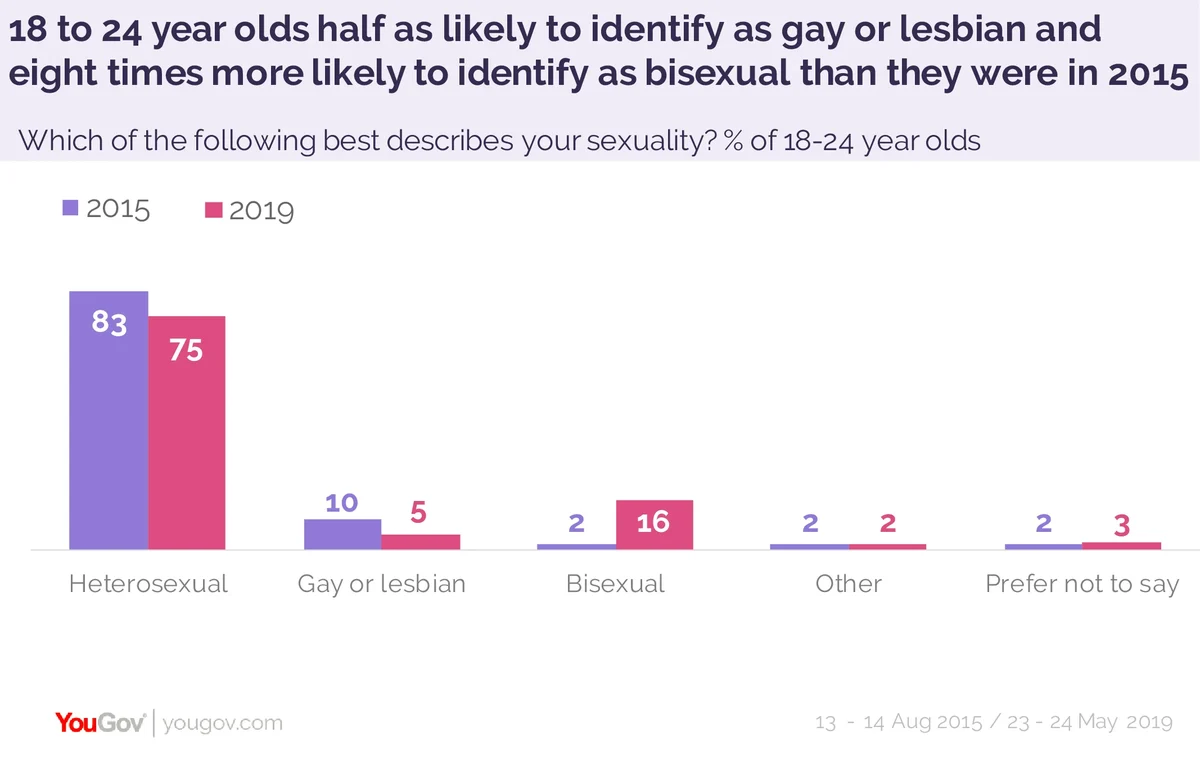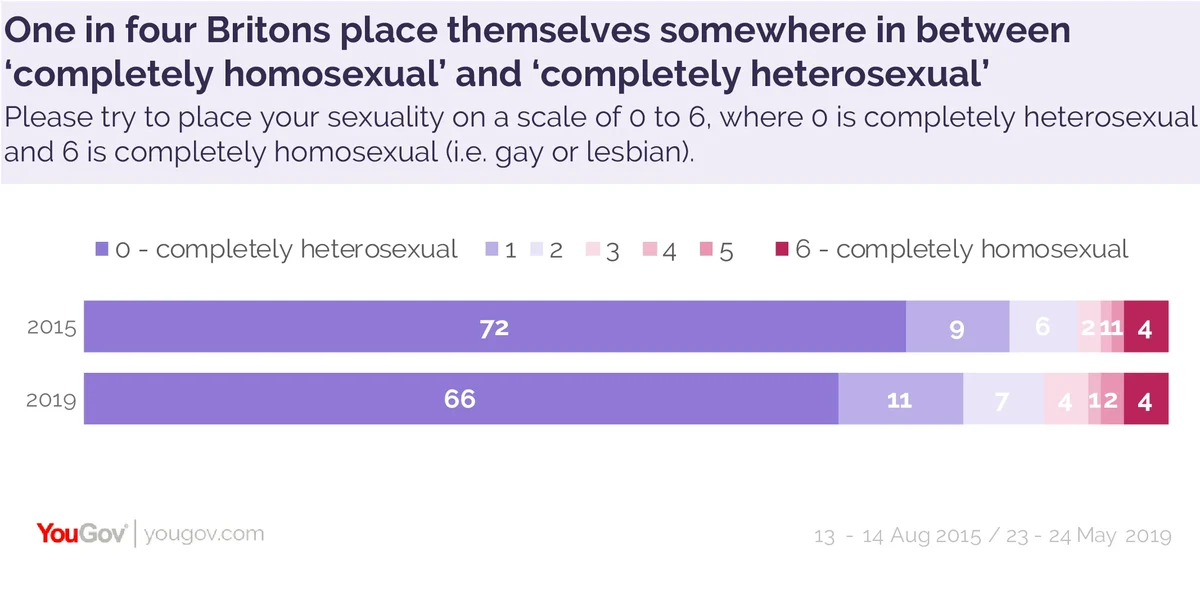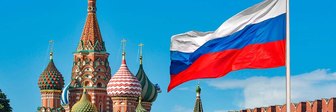Britons more likely than ever to see themselves as somewhere between homosexual or heterosexual, with the number of 18-24s identifying as bisexual eight times higher than 2015
A new YouGov survey shows more people than ever identify as somewhere between the extremes of the sexuality spectrum, with those aged 18 to 24 now eight times more likely than they were in 2015 to identify as bisexual.
When we asked 18 to 24 year olds in to choose what best described their sexuality in 2015 just one in fifty (2%) said they were bisexual. Our latest data, from this month, shows that one in six (16%) now choose this option – an eight-fold increase.

Building on the idea of sexuality as a spectrum, YouGov asked Britons where they would place themselves on the Kinsey scale of 0 to 6, where 0 is completely heterosexual and 6 is completely homosexual.
The results show that when people are asked to identify themselves on a scale, rather than within a defined set of options (heterosexual, homosexual or bisexual), the number identifying as ‘completely heterosexual’ - 0 on the scale - falls from 86% to 72%.
On the whole, Britons are slightly more likely to place themselves somewhere in between the two extremes of 0 and 6 than they were in 2015. One in four (24%) place themselves between 1 and 5, compared to one in five (19%) four years ago. The change is grounded in people moving from choosing 0 – completely heterosexual – to choosing 1 or 2. Among 18 to 24s, of whom 16% chose ‘bisexual’ from a set of fixed options, a full 32% place themselves on ‘1’ or ‘2’.

Among those who identified as ‘heterosexual’ in the first question of the survey, four in ten (41%) did not rule out that ‘if the right person came along at the right time’, it is conceivable that they could be attracted to a person of the same sex. A third (35%) could conceive of having a relationship with someone of the same sex – including one in ten (10%) of those who initially said there is ‘no middle ground’ in sexuality.
Photo: Getty







